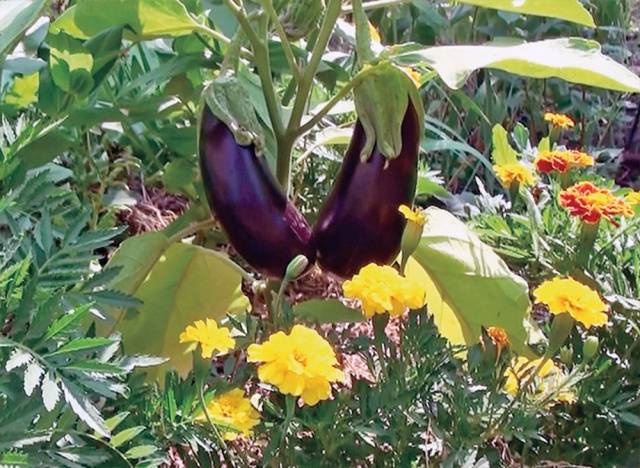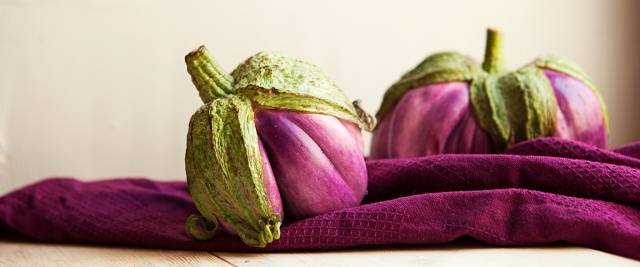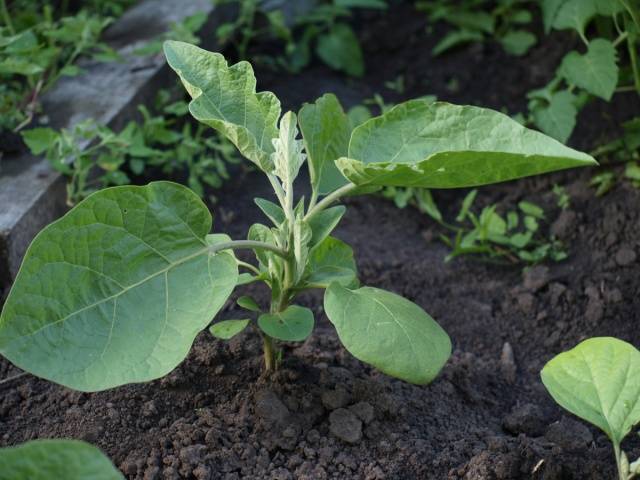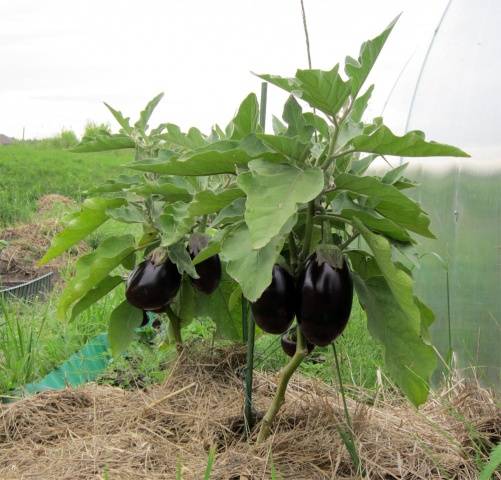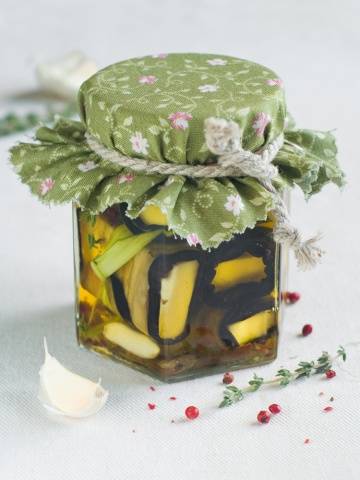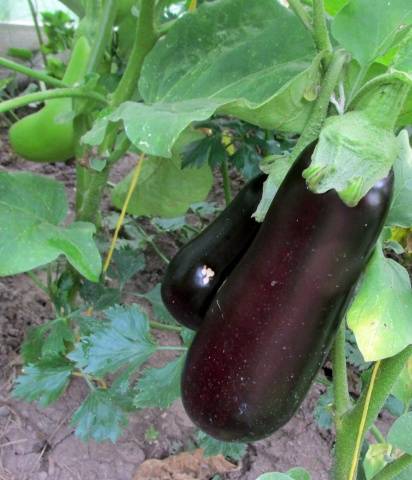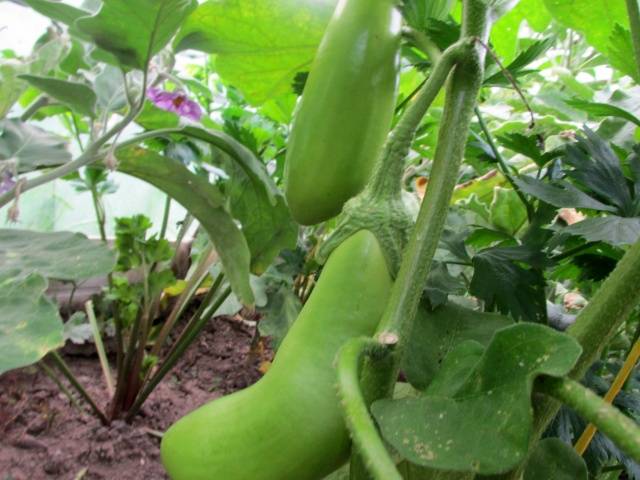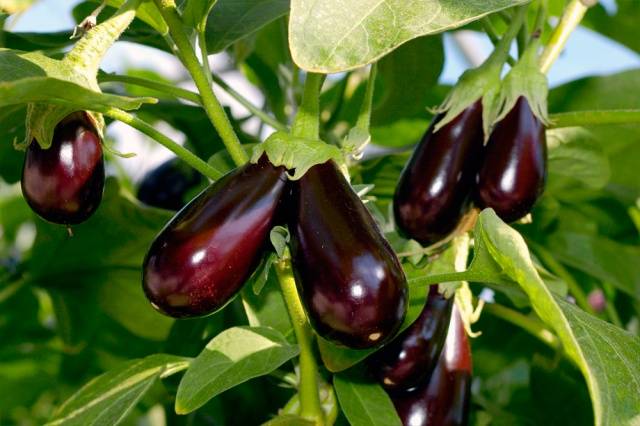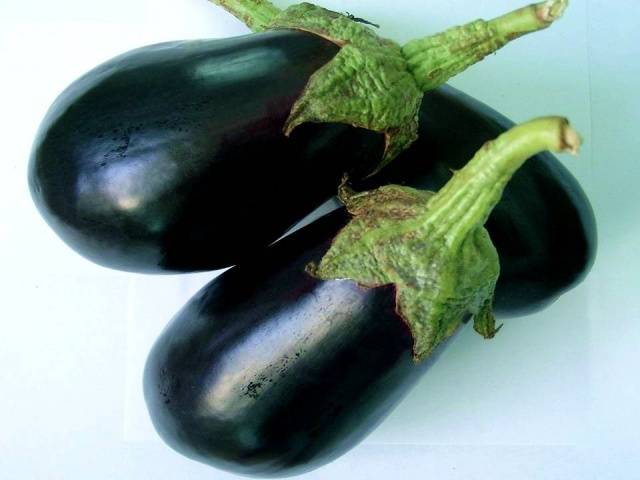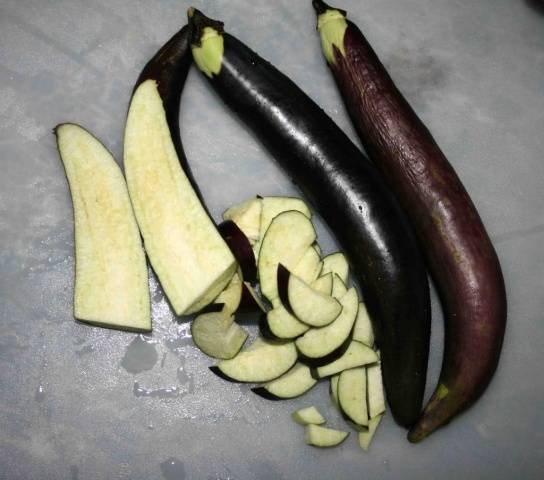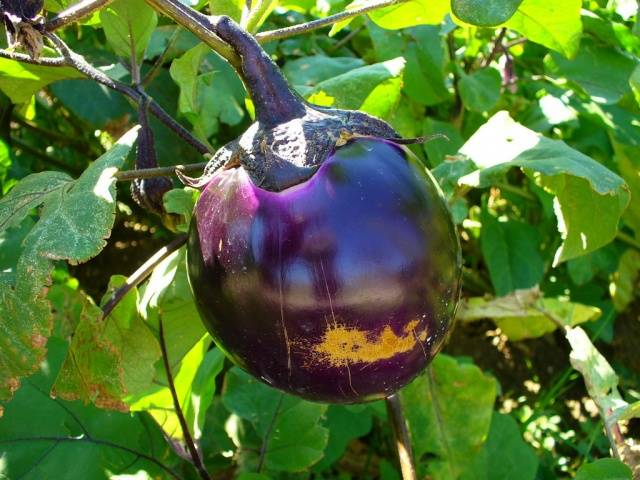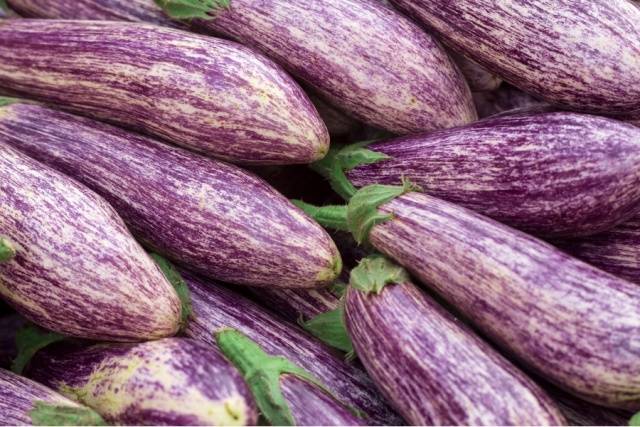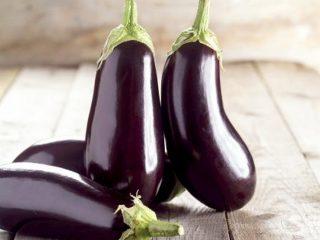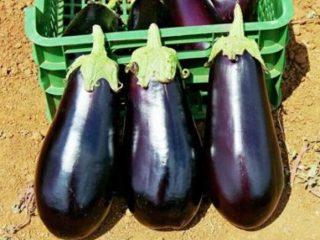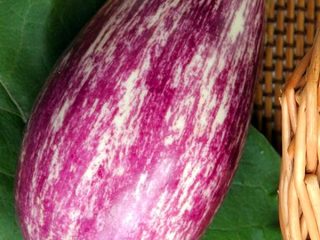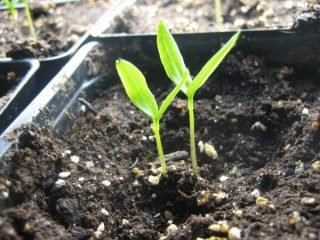Content
Eggplant has many fans. This vegetable, rich in potassium and other microelements, is very good for health, it strengthens blood vessels, removes excess fluid from the body, and destroys cholesterol. Any owner wants to see eggplants not only on the shelves of shops and markets, but also in their own garden plot.
The difficulty lies in the heat-loving nature of the vegetable; it is generally accepted that eggplants can only be grown in the south.
Modern varieties and hybrids are so adapted to external influences that they tolerate any temperature conditions well. The climate of the Moscow region is more northern; constant frosts begin here in October and end only in May. Not every crop will withstand such conditions, but There are eggplant varieties specially adapted for growth in short and cool summers.
What varieties can be grown in the Moscow region
The growing season of eggplant (the period from the appearance of the first shoots to the ripening of the fruit) is on average 110 days. There are earlier and early ripening varieties; they begin to bear fruit on the 75-90th day. Mid-season eggplants bear their first fruits 110-120 days after planting.It is these crops that are most suitable for the conditions of the Moscow region.
Early and mid-season eggplants give the best results:
- take root well after planting seedlings in the ground;
- have hardening from low temperatures;
- protected from most diseases;
- have a short growing season;
- suitable for growing in greenhouses and open ground;
- give high yields.
How eggplants are grown in the Moscow region
As in any northern region, in the Moscow region it is better to plant vegetables in a greenhouse. This method guarantees high yields, because the plants will be protected from frost and temperature fluctuations.
However, not all summer residents and gardeners have a greenhouse at their disposal; in this case, eggplants can be planted in open ground. But this must be done in seedlings.
First of all, you need to take care of the seedlings. Of course, you can buy young eggplant plants, but since they do not tolerate transportation and transplantation very well, it is better to grow the seedlings yourself. After all, the best harvests come from strong and healthy plants.
Growing eggplant seedlings has its own characteristics:
- seeds “hatching” takes quite a long time – 4-6 days.
- Before planting in the soil, the seeds must be soaked by wrapping them in a damp cloth. In this form they should lie for 4-5 days.
- It is better to sow seeds in disposable containers so as not to damage the fragile stems and roots when transplanting. The cups must have drainage holes to allow excess moisture to escape, otherwise the plant may rot.
- You can prepare the soil for eggplant seedlings yourself; to do this, mix soil from the garden or greenhouse with humus, ash, peat and a loosening agent (coarse sand, sawdust, straw crumbs).
- Each swollen seed is placed on the ground and covered with a centimeter layer of soil, and then watered.
- The containers with seeds are covered with glass or plastic wrap and placed in a warm place (24-28 degrees) for 10 days.
- The dishes with the emerging shoots are removed to a cooler place, the temperature there should be within 20 degrees.
- Seedlings are watered in a timely manner; eggplants love water.
Features of eggplants
Eggplant is a capricious crop. And, although modern varieties and hybrids are maximally adapted to external influences, these vegetables require certain care.
Here are some recommendations:
- An important feature of eggplants is their dependence on daylight hours. This plant needs long-term light - a day for eggplant should be at least 12 hours. And since the seedlings of this vegetable are grown in February-May, providing the required amount of sunlight is problematic. The solution is artificial lighting - the seedlings are “illuminated” with fluorescent lamps.
- Eggplant seedlings are planted in a heated greenhouse in March, in a solar-heated greenhouse - at the end of April - early May, and for open ground you will have to wait for the end of night frosts - in the Moscow region this period falls on May 25 - June 10.
- Depending on the timing of planting, the time when to sow the seeds is selected.It should be taken into account that in In a heated greenhouse, it is allowed to plant plants 45-55 days old, in other cases you will have to wait - the seedlings must be at least 75 days old. The trunks of the seedlings should be strong, the leaves should be large and bright green.
- Eggplants need to be watered regularly. The most suitable watering scheme is once a week, but very abundantly. The water should be warm; plants do not like cold.
- Another important requirement is that eggplants need access to air. In order for oxygen to reach the roots, the soil must be fluffed after each watering.
- It is better to fertilize the “little blue ones” with a solution of cow manure. Do this 3-4 times during the entire growing season.
- Eggplants need space, so no more than 4-6 plants should be planted per square meter.
- Tall varieties should be tied to a trellis and also pinched to form side shoots.
The best varieties for the Moscow region
Considering all of the above, we can conclude that For the conditions of the northern region, early and mid-season eggplants are most suitable, producing high yields and being resistant to diseases and low temperatures.
It would also be good if the chosen variety turned out to be universal - suitable for greenhouses and open ground. If there is no greenhouse on the site, it is more effective to use a temporary film shelter or plant seedlings in polyethylene tunnels.
"Giselle F1"
The best of these universal eggplants are the Giselle F1 hybrid vegetables. This plant can be grown in the south and north, both in a greenhouse and in open ground. The only thing is that in a heated greenhouse the yield of the hybrid will be slightly higher - up to 14 kgm², with the usual 7-9 kg.
The fruits grow large, their weight often reaches 500 grams, and their length is 25 cm. The shape of the eggplant is cylindrical, and the standard color is dark purple. The “blue” varieties of this variety have a very delicate taste and snow-white flesh, which is why gardeners love them most.
This vegetable is also versatile in consumption: eggplants are good both canned and as a snack.
The bushes of the hybrid "Giselle F1" are of medium height - up to 120 cm, and need tying and shaping.
The first fruits appear already on the 110th day after planting the seeds. They have a long shelf life and high commercial quality.
In order for the eggplant harvest to be plentiful, you will have to work hard, following all the growing recommendations, since the hybrid is quite capricious.
"Alenka"
The very unusual appearance and outstanding taste put the Alenka variety on a par with the best eggplants. The color of ripe fruits is bright green, and the flesh is light green in color, with an unusual mushroom flavor.
You can sow seeds for seedlings of this variety as early as the end of February, because eggplant tolerates low temperatures well. Plants need to be planted rarely - 4 pieces per square meter of land; this vegetable does not like being thickened. With this planting scheme, the yield of the “Alenka” variety reaches 7.5 kg per meter.
The fruits have an average size - up to 15 cm, and a fairly decent weight - up to 320 grams. These eggplants with an unusual taste and color go well with other varieties of vegetables in various salads and appetizers - you get a bright assortment.
The growing season of the hybrid is about 107 days, which makes it possible to grow the Alenka eggplant even in the northern regions. However, the highest yields can only be achieved in a greenhouse.
"Agate F1"
One of the most famous and high-yielding varieties, “Agate,” is also very unpretentious to the climate.
In the Moscow region, seedlings of this hybrid must be planted in the ground no earlier than mid-May.
It is even possible to plant eggplants with seeds - they are sown in the ground at the end of May and covered with film, which can be removed after the threat of frost.
“Agat” eggplants do not need to be soaked before cooking; the fruits of this variety have tender and absolutely non-bitter pulp. They are great for canning and preparing second courses.
The appearance of eggplants is standard - dark purple peel, oblong shape and small size of the vegetable (230 grams). The plant is resistant to diseases, but it is better to harvest the entire crop before the first autumn frosts, they are destructive for the plant. With frequent watering and regular feeding, you can get up to 8 kg of eggplants from one meter of soil.
"Albatross"
The mid-season variety brings very high yields - up to 9 kg per meter. Another advantage of eggplants is their resistance to the most common diseases: cucumber and tobacco mosaic.
However, the variety is susceptible to infection with other diseases, so plants need constant care and prevention. It is necessary to sow Albatross seeds in mid-March, and the first fruits will appear 120 days after that.
There should be no more than 3 bushes per square meter of soil; the plants are not tall - up to 70 cm, but spreading and have many ovaries.
The color of ripe fruits is dark purple, and the flesh of these eggplants is greenish, without a bitter aftertaste. The shape is the main distinguishing feature; it is pear-shaped. The average length of the fruit is 15-20 cm. The fruits are quite weighty - the average weight is 350 grams.
Only with proper feeding and disease prevention will the Albatross eggplant harvest be stable.
"Don Quixote"
An early-ripening variety with an interesting name is suitable only for greenhouse cultivation, and it is not so important what kind of greenhouse it will be: heated, unheated or temporary.
It is very easy to recognize the “little blue” varieties of this variety - the fruits have an unusual elongated shape that expands downward. Their color is deep purple, and the flesh has a light green tint.
The weight of one eggplant is about 250-300 grams, and the length can reach up to 40 cm.
Don Quixote eggplants have excellent taste, because these “little blue” ones have no bitterness, and their pulp has practically no seeds. The dense and juicy pulp can be used for preparing any dishes, pickling and canning.
The plant is protected from spider mites and produces good yields - up to 9 kg per meter.
"Sancho Panza"
An indispensable companion of Don Quixote is the Sancho Panza variety. The plant is very stable and can tolerate even low temperatures, so these eggplants can be grown even beyond the Urals, and not just near Moscow. It is great for open ground.
The bushes grow very tall - up to 150 cm, and the fruits on them are unusual - dark purple balls. The weight of one such eggplant is 600 grams - it can feed the whole family.
The yield of the variety is high - up to 9 kg per square meter. The plant is resistant to most diseases and does not require special care.
"Romantic"
The early-ripening variety allows you to enjoy fresh eggplants already on the 110th day after sowing the seeds. The fruits have an unusual color - soft purple, and an elongated oval shape. They are used for preparing any dishes, as well as for preservation.
The bushes grow low - up to one meter. The plant is very capricious and does not tolerate cold and disease. Therefore, it is recommended to grow “Romantic” seedlings under film or in greenhouses. In such conditions, the variety will give a good harvest - from 6 to 8 kg per meter.
Conclusions and recommendations
For the cold Moscow region, you need to choose early or mid-season eggplant varieties - only such plants will have time to grow and ripen before the onset of autumn frosts. Each owner should try several varieties and hybrids to determine the best ones. Indeed, several conditions are important for eggplant, including even the illumination of the area and the composition of the soil on it.
An experimentally established variety will produce consistently high yields and delight the owner with ripe fruits until mid-autumn.
